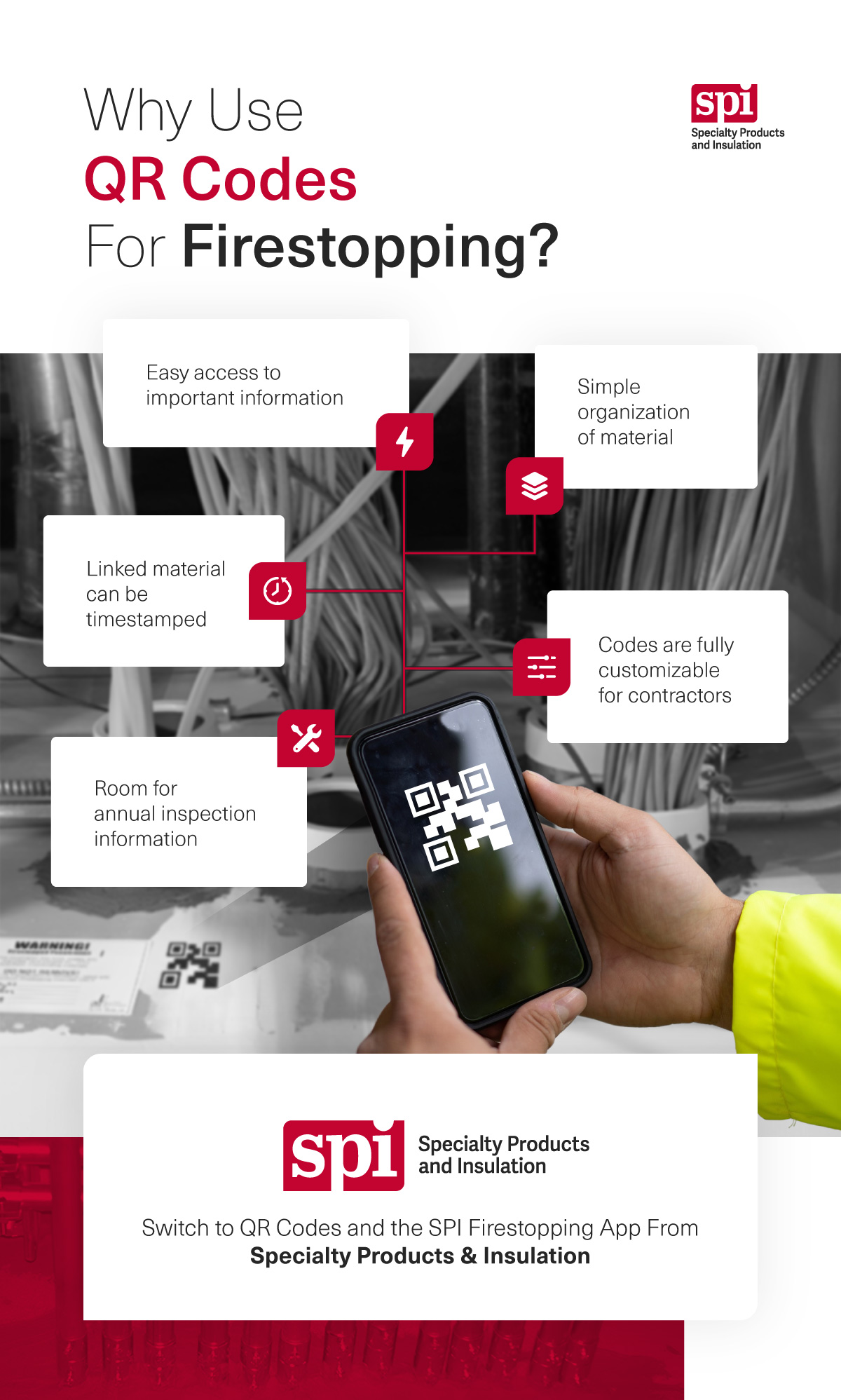Using QR Codes to Manage Firestopping
Posted on Wednesday Aug 03, 2022 at 10:17AM in Insulation
One of the byproducts of COVID-19 was the rapid proliferation of QR codes. It is estimated that less than 40% of the population understood them, or had even scanned one before then. This is an interesting fact to consider given that the smartphone manufacturers of Apple and Android had equipped their cameras with built-in QR code readers two years prior, and sometime before then there was a downloadable app available to read the codes. Even though they existed prior to 2020, common familiarity with this method of communicating was simply not there yet.
Fortunately, QR codes have proved their worth as a viable resource for all kinds of data at our fingertips. They act as a conduit that an operator, inspector, or a general consumer can access with ease. Now that QR codes are part of everyday life, we have begun to use them in a new way: passive firestopping.
Most newly renovated or newly constructed buildings receive pages of mechanical drawings and operating manuals during construction. This information is vital to the operation of the facility, but can be overwhelming to comb through. Attaching QR codes to this information provides useful knowledge in a quick and precise manner rather than the outdated database or filing cabinet. Simply scanning the QR code on the equipment provides immediate access to the operating manual and lists of compatible parts.
Until now, firestopping labels have been the dominating information provider at the job site. Though they are not always required, many construction engineers and architects demand them, and many installers elected to provide them. Most of these labels include the date of installation, name and phone number of the contractor, name of products used, and the specific UL System they are intended for. They have high visibility, typically a 3” x 5” dimension, and provide stern warnings such as “Do Not Remove” or “Must Remain Firestopped” as an indication to everyone that tampering with the installation will jeopardize the system performance.
SPI and Thermaxx have recently developed QR codes that compliment these firestopping labels by providing an app that gives building owners and contractors a cost-effective way to digitize their information. One key feature allows contractors the ability to take numerous pictures throughout the installation process and then archive them with a timestamp. This provides easy access to clear data in the event an inspector asks how and when it was done. The information can be accessed from any smartphone or web portal. See the example below:

Both the SPI Firestopping app and QR codes are fully customizable and can include things such as the contractor’s logo, website, and contact information. Fields can also be added to facilitate annual inspections, which enhance the safety of the firestopping system by keeping it in good working order.
Contact us today to learn more about how our QR codes and app can benefit your next project.
Blog sponsored by Brian Bannon and Brian Dix
